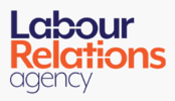Set up employment policies for your business
Disciplinary, grievance, bullying and harassment policies
You are required by law to set out your disciplinary rules and disciplinary and grievance procedures, in writing.
It's also common for employers to have a separate bullying and harassment policy for their workplace.
Discipline and grievance policies
You must tell each employee about:
- your disciplinary rules
- your disciplinary/dismissal and grievance procedure
- the name of the person to whom they should appeal if they are unhappy about a disciplinary or dismissal decision, or to seek redress for a grievance
This information can be included in the employee's written statement or the written statement may refer the employee to a document where they can read it, eg in a staff handbook - see Invest Northern Ireland Employers' Handbook.
If you fail to issue this information in writing, and one of your employees makes an industrial tribunal case against you and wins, you may have to pay up to four weeks' wages on top of any other compensation the tribunal may award.
It's important that your disciplinary rules give examples of the types of behaviour that qualify as gross misconduct, eg fighting, bullying, and stealing. If you find that an employee has committed an act of gross misconduct, you could be entitled to dismiss them summarily without notice or pay in lieu of notice. You should ensure that you comply with the statutory dismissal procedures and the LRA Code of Practice on Discipline and Grievance even when dismissing for gross misconduct.
Read more on disciplinary procedures, hearings, and appeals, handling grievances, and dismissing employees.
To access templates that you can download, tailor, and use, see grievance and disciplinary procedures and templates.
Employment document toolkit
If you require further help with drawing up your disciplinary and grievance policies, the Labour Relations Agency (LRA) has a free employment document toolkit. Once you have registered you can get access to their free core employment guides to help you build documents, policies, and procedures for your own organisation.
Bullying and harassment policies
Bullying and harassment are conduct issues and therefore would normally fall under your disciplinary policy. However, many employers have a separate bullying and harassment policy given that such behaviour:
- needs dealing with sensitively
- can amount to gross misconduct
- may involve unlawful discrimination
There is no legislation that is specifically designed to address workplace bullying. However, bullying can be successfully challenged through existing legislation, ie civil, criminal, and employment law.
You have a legal duty to protect the health and safety of your workers. Bullying can also lead to a breakdown in trust and confidence between you and the alleged victim, leading to the employee resigning and claiming constructive dismissal.
Sexual harassment and harassment on the grounds of sex, disability, race, sexual orientation, religion/belief, and age are unlawful. Even if a worker harasses a colleague, the victim can make a discrimination claim against you.
You should have a clear policy on bullying and harassment so that staff understands that it's unacceptable. The policy should also include a procedure for dealing with claims of harassment or bullying should they arise.
- LRA Workplace Information Service03300 555 300
